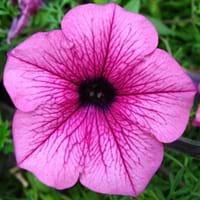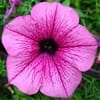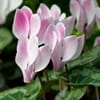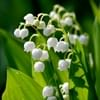Life Span
Annual
Perennial
Type
Flowering Plants, Shrubs
Succulent
Origin
South America
Southern Africa
Types
Grandiflora Petunias, Multiflora Petunias, Wave Petunias, Superbell Petunias, Supertunia Petunias
Limpopo, Prostrata, Aurea, Medio Picta
Number of Varieties
Not Available
Habitat
Terrestrial
Dry areas, Lower slopes, Rocky areas
USDA Hardiness Zone
9-10
10-12
AHS Heat Zone
Not Available
10-1
Sunset Zone
not provided
8, 9, 12, 13, 14, 15, 16, 17, 18, 19, 20, 21, 22, 23, 24
Habit
Not Available
Twisted/Contorted
Flower Color
Blue, Pink, Purple, Red, White, Yellow
Pink
Flower Color Modifier
Not Available
Not Available
Fruit Color
Not Available
Green, Red
Leaf Color in Spring
Golden Green
Green
Leaf Color in Summer
Green
Green
Leaf Color in Fall
Green
Green
Leaf Color in Winter
Green
Green
Leaf Shape
Ovate
Succulent
Plant Season
Summer
Spring, Summer, Fall, Winter
Sunlight
Full Sun, Partial shade
Full Sun, Partial Sun, Partial shade
Type of Soil
Loamy, Sandy
Loam, Sand
The pH of Soil
Neutral
Acidic, Neutral, Alkaline
Soil Drainage
Well drained
Well drained
Bloom Time
Fall, Spring, Summer
Late Spring
Tolerances
Pollution
Drought, Dry soil, Heat Tolerance
Where to Plant?
Container, Ground, Pot
Container, Ground, Pot
How to Plant?
Seedlings, Transplanting
Seedlings, Stem Planting
Plant Maintenance
Medium
Low
Watering Requirements
Keep the ground moist but not water-logged, Requires regular watering, Requires watering in the growing season
Average Water Needs, Needs less watering
In Summer
Lots of watering
Ample Water
In Spring
Moderate
Less Watering
In Winter
Average Water
Less Watering
Soil pH
Neutral
Acidic, Neutral, Alkaline
Soil Type
Loamy, Sandy
Loam, Sand
Soil Drainage Capacity
Well drained
Well drained
Sun Exposure
Full Sun, Partial shade
Full Sun, Partial Sun, Partial shade
Pruning
Cut or pinch the stems, Do not prune during shooting season, Remove dead or diseased plant parts, Remove deadheads
Prune if you want to improve plant shape, Remove damaged leaves, Remove dead branches, Remove dead leaves, Remove dead or diseased plant parts
Fertilizers
All-Purpose Liquid Fertilizer
All-Purpose Liquid Fertilizer, Fertilize in early spring, Fertilize late winter
Pests and Diseases
Aphids, Bacterial Blight, Caterpillars, Gray mold, Leaf spot, Powdery mildew, Root rot, Spider mites, Thripes, Verticillium Wilt, Viruses
Pests and diseases free
Plant Tolerance
Drought
Drought, Dry soil, Heat Tolerance
Flower Petal Number
Not Available
Single
Fragrant Bark/Stem
Yes
No
Foliage Texture
Medium
Bold
Foliage Sheen
Matte
Matte
Attracts
Butterflies, Hummingbirds
Butterflies
Allergy
Not Available
no allergic reactions
Aesthetic Uses
Beautification, Bouquets, Showy Purposes
Beautification, Bonsai, Showy Purposes
Beauty Benefits
Not Available
Good for skin, Improve skin condition, Skin cleanser, Skin inflammation, Skin irritation, Skin Problems
Environmental Uses
Air purification
Air purification, Erosion control, Food for birds, Indoor Air Purification, Prevent Soil Erosion, Shelter for wildlife, Wildlife
Medicinal Uses
Not Available
Dehydration, Diabetes, Skin Disorders, Skin irritation, Sore throat
Part of Plant Used
Flowers
Leaves, Stem
Other Uses
Showy Purposes
Animal Feed, Showy Purposes, Used As Food, Used as Ornamental plant, Used for its medicinal properties, Used in salads
Used As Indoor Plant
Yes
Yes
Used As Outdoor Plant
Yes
Yes
Garden Design
Bedding Plant, Container, Edging
Container, Rock Garden, Wall, Tropical
Botanical Name
Petunia
PORTULACARIA afra
Common Name
Petunia
Porkbush, Dwarf jade plant, Spekboom
In Hindi
Petunia
Elephant Bush
In German
Petunie
Elephant Bush
In French
Pétunia
Elephant Bush
In Spanish
Petunia
elefante Bush
In Greek
πετούνια
ελέφαντας Μπους
In Portuguese
Petúnia
elefante de Bush
In Polish
Petunia
Elephant Bush
In Latin
Petunia
bush elephant
Phylum
Streptophyta
Embryophyta
Class
Magnoliopsida
Magnoliopsida
Order
Solanales
Caryophyllales
Family
Solanaceae
Portulacaceae
Genus
Petunia
Portulacaria
Clade
Angiosperms, Asterids, Eudicots
Angiosperms, Core eudicots, Eudicots
Tribe
Not Available
Not Available
Subfamily
Petunioideae
Portulacarioideae
Number of Species
Not Available
Importance of Petunia and Elephant Bush
Want to have the most appropriate plant for your garden? You might want to know the importance of Petunia and Elephant Bush. Basically, these two plants vary in many aspects. Compare Petunia and Elephant Bush as they differ in many characteristics such as their life, care, benefits, facts, etc. Every gardener must at least have the slightest clue about the plants he wants to plant in his garden. Compare their benefits, which differ in many ways like facts and uses. The medicinal use of Petunia is Not Available whereas of Elephant Bush is Dehydration, Diabetes, Skin Disorders, Skin irritation and Sore throat. Petunia has beauty benefits as follows: Not Available while Elephant Bush has beauty benefits as follows: Not Available.
Compare Facts of Petunia vs Elephant Bush
How to choose the best garden plant for your garden depending upon its facts? Here garden plant comparison will help you to solve this query. Compare the facts of Petunia vs Elephant Bush and know which one to choose. As garden plants have benefits and other uses, allergy is also a major drawback of plants for some people. Allergic reactions of Petunia are Not Available whereas of Elephant Bush have no allergic reactions respectively. Having a fruit bearing plant in your garden can be a plus point of your garden. Petunia has no showy fruits and Elephant Bush has no showy fruits. Also Petunia is flowering and Elephant Bush is not flowering . You can compare Petunia and Elephant Bush facts and facts of other plants too.





